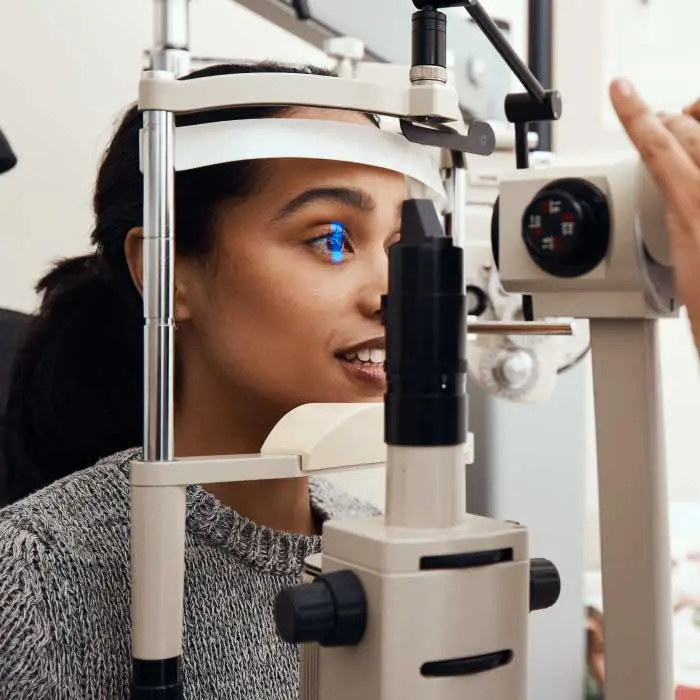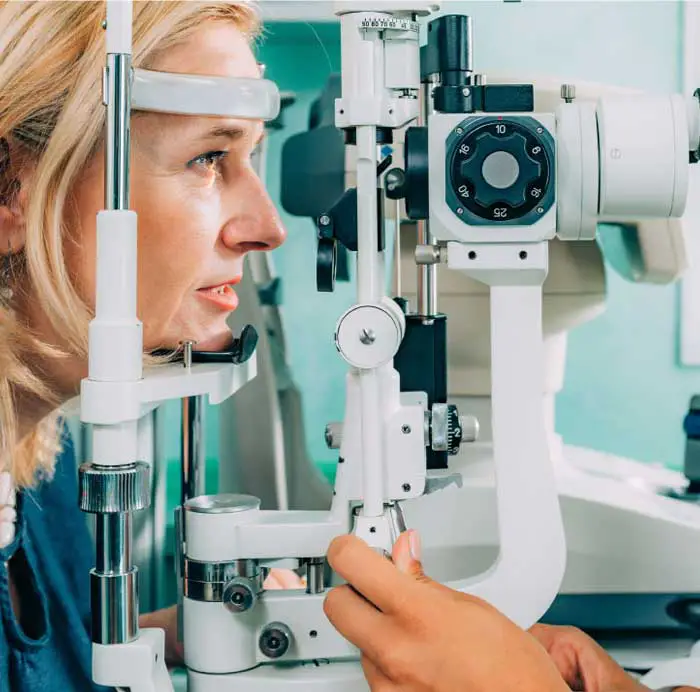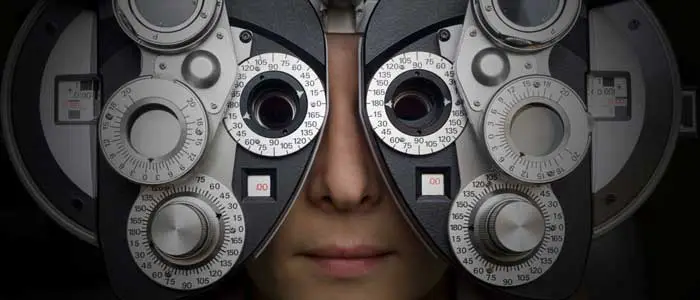Ocular Toxoplasmosis - Symptoms, Causes and Treatment
07-04-2024
What is Ocular Toxoplasmosis?
Ocular toxoplasmosis is a condition caused by the parasite Toxoplasma gondii that affects the eye. It can lead to inflammation and scarring in the retina, causing vision problems. People with this condition may experience blurred vision, floaters, and sensitivity to light. Ocular toxoplasmosis can have varying degrees of severity, and proper management is important to prevent potential complications. Regular eye exams and prompt treatment are essential in preserving vision for individuals affected by this condition.What Are The Causes Of Ocular Toxoplasmosis?
Ocular Toxoplasmosis is caused by the parasite Toxoplasma gondii. This parasite can be found in contaminated soil, water, or undercooked meat. Infection typically occurs when individuals come into contact with the parasite through ingestion or exposure to contaminated materials. Once the parasite enters the body, it can travel to the eye and cause inflammation and damage to the retina, leading to the development of Ocular Toxoplasmosis.What Are The Risk Factors For Ocular Toxoplasmosis?
Some risk factors for developing Ocular Toxoplasmosis include being exposed to the Toxoplasma gondii parasite, which can be found in contaminated food or water, as well as contact with infected cat feces. Individuals with weakened immune systems, such as those with HIV/AIDS or undergoing chemotherapy, are also at a higher risk for developing Ocular Toxoplasmosis. Pregnant women who become infected with Toxoplasma gondii for the first time during pregnancy can also pass the infection on to their unborn child, increasing the risk of Ocular Toxoplasmosis in the infant. Additionally, individuals who consume undercooked meat or unpasteurized dairy products may be at a higher risk for contracting the infection.What Are The Symptoms Of Ocular Toxoplasmosis?
Symptoms of Ocular Toxoplasmosis can vary depending on the severity of the infection. Common symptoms include blurred vision, eye pain, redness, sensitivity to light, and floaters or spots in the vision. Some individuals may also experience a sudden decrease in vision, especially if the infection affects the macula, the central part of the retina responsible for sharp, central vision. In more severe cases, individuals may develop inflammation in the eye, leading to additional symptoms such as eye discomfort, headaches, and even fever. It is important to seek prompt medical attention if you experience any of these symptoms, as early detection and treatment can help prevent complications and preserve vision.How is Ocular Toxoplasmosis Diagnosed?
Ocular Toxoplasmosis is typically diagnosed through a comprehensive eye examination by an optometrist or ophthalmologist. During the exam, the eye care provider will look for characteristic signs of the infection, such as inflammation, retinal scarring, or active lesions in the eye. In addition, imaging tests such as optical coherence tomography (OCT) or fundus photography may be used to visualize the affected areas of the retina more clearly. In some cases, blood tests may also be performed to check for the presence of antibodies to the Toxoplasma gondii parasite, which causes the infection. A definitive diagnosis of Ocular Toxoplasmosis can help guide the appropriate treatment and management of the condition.How is Ocular Toxoplasmosis Treated?
Ocular Toxoplasmosis is typically treated with a combination of medications aimed at reducing inflammation and controlling the infection. The mainstay of treatment is usually a course of antibiotics such as pyrimethamine and sulfadiazine, which help to target the parasite responsible for the infection. In addition, corticosteroid eye drops may be prescribed to help reduce inflammation and swelling in the eye. In some cases, anti-inflammatory medications or immunosuppressants may also be used to help manage symptoms and prevent complications. As with any medical condition, it is important to consult with a healthcare professional to determine the most appropriate and effective treatment plan for Ocular Toxoplasmosis.Is There A Cure For Ocular Toxoplasmosis?
There is currently no cure for Ocular Toxoplasmosis. However, treatment options are available to help manage the condition and reduce symptoms. These may include medications to help control inflammation and infection, as well as regular monitoring by an eye care professional to assess and address any changes in vision or eye health. It is important for individuals with Ocular Toxoplasmosis to follow their doctor's recommendations and seek prompt medical attention if any new or worsening symptoms develop.How Can Ocular Toxoplasmosis Be Prevented?
Ocular Toxoplasmosis can be prevented by practicing good hygiene habits, such as washing hands thoroughly and frequently, especially after handling raw meat or gardening. It is also important to avoid exposure to cat feces and to ensure that all meat is cooked thoroughly before consumption. Pregnant women should take extra precautions to prevent infection, as it can be passed from mother to baby during pregnancy. Additionally, individuals with weakened immune systems should take special care to avoid exposure to the Toxoplasma gondii parasite, which can cause Ocular Toxoplasmosis.Eye exams with advanced technologies are essential for the diagnosis and treatment of ocular toxoplasmosis. Schedule an eye exam with an optometrist today!
Schedule An Appointment
Adult Eye Exams
Our advanced eye exams consist of 25+ modern tests and digital scans to assess eye health, function, and visual acuity.

Child Eye Exams
Give your child a clear future with an annual eye exam from our experienced Edmonton optometrists.

Senior Eye Exams
Maintain your vision through your golden years with gold standard eye care from the optometrists at our Edmonton eye clinic.

Contact Lens Eye Exams
Our eye exams for contact lens wearers include test and digital scans to assess eye health, function, visual acuity, and lens fit.

Diabetic Eye Exams
Managing diabetes requires regular eye exams to ensure that diabetes is not causing irreversible vision loss.

Dilated Eye Exams
Dilating the eyes enables our Edmonton optometrists to see more of the eye so that you many never see less.
Our Edmonton Eye Exams Are Comprised Of 4 Phases Of Evaluation

1. Eye Exam Pre-Testing
Corneal Thickness | Intraocular Pressures | Visual Field
Pre-testing is a detailed process that gathers all necessary information for the optometrist in advance of the optometrist-administered eye examination. This process involves completing a detailed patient history, as well as a series of standard tests. Pre-testing is an essential part of the comprehensive eye exam process, providing valuable information and visuals for both the optometrist and the patient.
More About Pre-Testing »
2. Advanced Diagnostic Testing
Retinal Photography, OCT, Topography
eye-deology Vision Care differentiates itself from other clinics by having the most advanced modern diagnostic specialty testing equipment. Specialty equipment, such as a wide-angle high-resolution retinal imager, Optical Coherence Tomography (OCT), Humphrey Visual Field Analyzer and corneal topographer, ensures that patients receive the best comprehensive eye care.
More About Advanced Testing »
3. Optometrist Examination
Health Assessment & Disease Diagnosis
eye-deology Vision Care Edmonton optometrists perform a multitude of tests and assessments to evaluate ocular health, eye coordination, and visual acuity. In addition, they also evaluate the results of the tests and scans performed during pre-testing. As part of patient education, our optometrists also take the time to show and explain results to patients.
More About Doctor Exam »
4. Eye Glass Consult
Prescription | Lens Selection | Digital Fitting
If you require corrective lenses to improve your vision, our licensed opticians will customize their fit to your unique attributes, needs, lifestyle, and budget. Our opticians are happy to provide you with information about the latest eyeglass frame and lens technologies available so you can make informed decisions and begin seeing and looking your best.
More About Eyewear Consult »